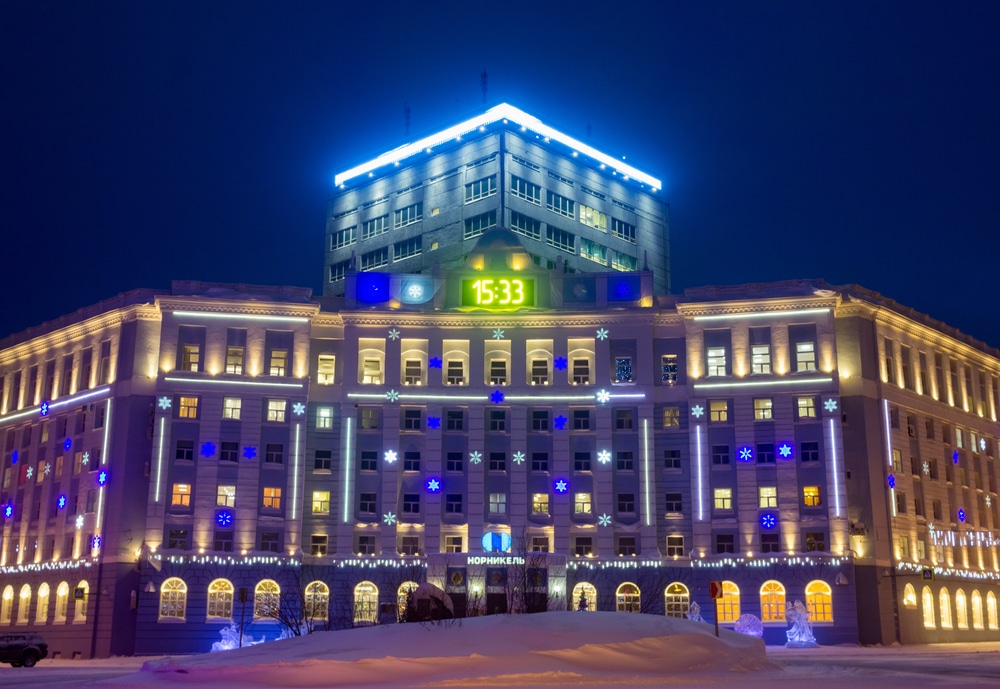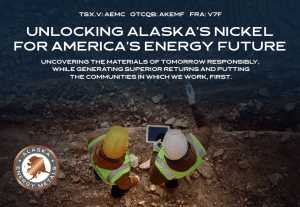As reported by Bloomberg, Russia’s largest mining company, Nornickel is negotiating to establish a major copper smelting facility in Fangchenggang, a port city in China’s Guangxi region. The proposed plant will use raw copper concentrate transported from Russia and will have the capacity to refine up to 500,000 tons of copper annually. This project aims to bring the final processing a step closer to China’s vast metal market.
Nornickel’s Push for Joint Ventures in China Amid Western Sanctions
Nornickel is Russia’s leading metals and mining company and the world’s largest high-grade nickel and palladium producer. President, Vladimir Potanin said that the company has been exploring options in copper for joint projects in China since earlier this year.
Strategic ambitions for 2030+ metal production
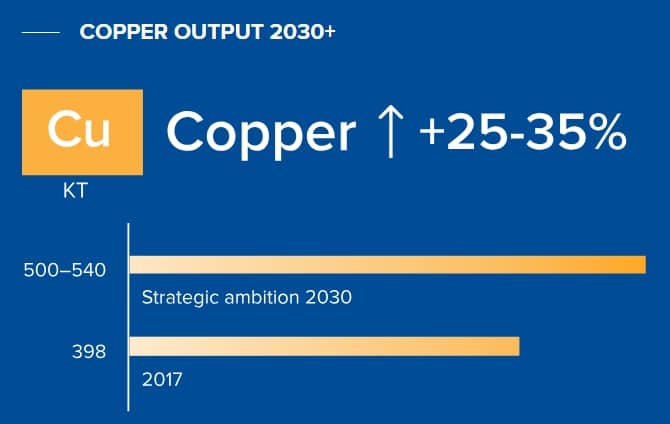
Source: Nornickel
Lately, Western sanctions on Russian commodities have made global trade more difficult. These restrictions limit where and how Russian goods, like metals (aluminum, copper, and nickel) and energy resources, can be sold. As a result, Nornickel has been seeking joint ventures in China since earlier this year even though it is not directly sanctioned by the West.
The mining giant has not disclosed the name of the Chinese partner they are in talks with but they hint at constructing a greenfield plant at the mentioned location.
The smelter project represents a strategic shift for Nornickel, which previously explored partnerships with established Chinese smelters to process Russian concentrate. However, those plans were abandoned in favor of a new, purpose-built facility.
China’s Copper Dominance: Too Much of a Good Thing?
Demand for copper is going high due to renewables, electric vehicles, and grid infrastructure. According to Bloomberg, China’s refined copper output rose by over 5% in 2024 despite certain production curbs. Furthermore, in recent years, the country has rapidly constructed smelters which has led to an increase in its global share for copper.
This burst in capacity is certainly not favorable for the Chinese copper market. Rather it has put tremendous pressure on domestic smelters to slow expansion. This is the outcome of the fierce competition and limited raw materials which have shrunk the profits of the copper industry.
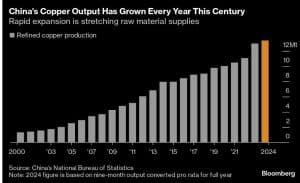
Source: Bloomberg
Grant Sporre, head of metals and mining research at Bloomberg Intelligence had cautioned that China’s excesses threaten the future of copper refining beyond its borders and operations from Chile to Europe and India could be at risk.
The above analysis is based on the fact that ore supply has intensified as new smelters open in India and Indonesia. India is rapidly building plants to cut down on copper imports and strengthen domestic production. Meanwhile, Indonesia has taken steps to keep its ore resources within the country by curbing exports on which many smelters in Asia rely. This shift forces copper smelters in Asia to secure new sources or risk production slowdowns, further straining the already tight market.
However, interestingly some analysts suggested that state-owned Chinese smelters may handle the market downturn better than global competitors. This is simply because of the cost advantages and more modern facilities the country is equipped with.
Is Nornickel’s Entry A Threat to China’s Copper Giants?
Fangchenggang, where the plant would be built, already has a large smelter with a 600,000-ton capacity and is operated by China’s state-owned Jinchuan Group. On top, this project comes at a time when the country is dealing with an oversupply of copper refining capacity.
As a consequence, Nornickel’s project has met substantial resistance from Chinese copper producers, who feel the extra capacity could harm their domestic output.
China’s refined copper imports from Russia have declined by over one-third year-on-year, totaling about 165,000 tons in the first nine months of 2024. The new smelter, if finalized, would help stabilize the flow of Russian copper into China and offer Nornickel an opportunity to circumvent Western trade restrictions while accessing the world’s largest copper market.
Operational performance
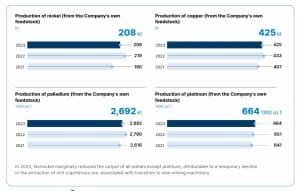
Source: Nornickel Sustainability Report
Thus, it’s too early to comment on whether Nornickel’s entry will be a boon or a bane for China’s copper market. The study is speculative and the picture will be clear eventually as the mining company reveals more details of their expansion plans.
Expanding on Critical Resources: Alaska’s Role in U.S. Energy Independence
The challenges Nornickel faces in China underscore the broader global race to secure critical mineral resources, especially as countries like the U.S. strive for energy independence. Alaska, a state rich in mineral deposits, is at the center of efforts to boost domestic production of essential metals. Canadian mining company Alaska Energy Metals Corporation (AEMC) is one such player making strides by exploring Alaska’s underground deposits of nickel, a metal critical for energy transition technologies, particularly electric vehicle batteries.
AEMC President Greg Beischer has highlighted the importance of building a sustainable, domestic supply chain for nickel and other key minerals. With AEMC’s flagship project, the 23,000-acre Nikolai deposit, the company aims to help reduce the U.S.’s reliance on imports and support a shift towards a low-carbon economy. The Nikolai deposit holds substantial nickel reserves and also contains copper, cobalt, platinum, and palladium—metals deemed critical by the U.S. Department of Energy.
AEMC’s activities in Alaska mirror Nornickel’s efforts in Fangchenggang. Both companies recognize the growing need to secure a stable supply of strategic minerals, given geopolitical pressures and the global focus on energy security. For AEMC, overcoming challenges posed by fluctuating nickel prices and securing project funding are priorities to advance the Nikolai project, which they aim to assess economically by 2025. This project also aligns with U.S. initiatives to establish local sources for critical minerals, a strategy that could mitigate reliance on overseas production.
Data and Content Sources:
- Russian Miner Moves Closer to Deal for New Copper Plant in China – Bloomberg
- China’s Copper Production Boom Threatens to Crowd Out the Rest of The World – Bloomberg
- FURTHER READING: Will AI Drive A Global Copper Shortage? BHP Rings the Alarm
Disclosure: Owners, members, directors, and employees of carboncredits.com have/may have stock or option positions in any of the companies mentioned: AEMC.
Carboncredits.com receives compensation for this publication and has a business relationship with any company whose stock(s) is/are mentioned in this article.
Additional disclosure: This communication serves the sole purpose of adding value to the research process and is for information only. Please do your own due diligence. Every investment in securities mentioned in publications of carboncredits.com involves risks that could lead to a total loss of the invested capital.

